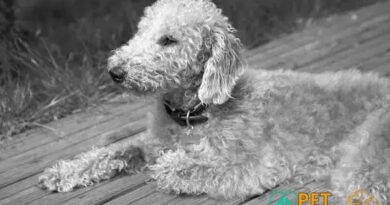What is Wounds
What is Wounds in Dogs?
Wounds in dogs refer to any injury that disrupts the normal structure of the skin or underlying tissues. These injuries can range from minor cuts and scrapes to deep lacerations and puncture wounds. Understanding what constitutes a wound is crucial for dog owners, as it helps in identifying the severity of the injury and determining the appropriate course of action.
Types of Wounds in Dogs
There are several types of wounds that can affect dogs, including abrasions, lacerations, puncture wounds, and surgical wounds. Abrasions are superficial injuries that affect only the outer layer of skin, while lacerations are deeper cuts that may involve underlying tissues. Puncture wounds, often caused by sharp objects, can be particularly dangerous as they may not bleed much but can lead to serious infections. Surgical wounds are those resulting from medical procedures and require special care to ensure proper healing.
Common Causes of Wounds in Dogs
Wounds in dogs can be caused by a variety of factors. Common causes include fights with other animals, accidents, falls, and encounters with sharp objects. Additionally, certain dog breeds may be more prone to specific types of injuries due to their activity levels or physical characteristics. Understanding these causes can help dog owners take preventive measures to protect their pets.
Signs of Wounds in Dogs
Identifying wounds in dogs is essential for prompt treatment. Signs may include visible cuts or abrasions, swelling, redness, and discharge from the wound site. Dogs may also exhibit signs of pain, such as whining, limping, or reluctance to move. If a wound is suspected, it is important to examine the dog closely and seek veterinary care if necessary.
Treatment Options for Dog Wounds
Treatment for wounds in dogs varies depending on the severity and type of injury. Minor wounds may be treated at home with cleaning and bandaging, while more severe wounds may require veterinary intervention. Veterinarians may clean the wound, prescribe antibiotics to prevent infection, and provide pain relief. In some cases, stitches or surgical intervention may be necessary to promote proper healing.
Preventing Wounds in Dogs
Preventive measures can significantly reduce the risk of wounds in dogs. Regular grooming can help identify potential issues before they become serious, while providing a safe environment can minimize accidents. Training and socialization can also help prevent fights with other animals, reducing the likelihood of injuries. Additionally, keeping dogs on leashes during walks can prevent encounters with sharp objects or dangerous situations.
Healing Process of Dog Wounds
The healing process for wounds in dogs typically involves several stages, including hemostasis, inflammation, proliferation, and remodeling. During hemostasis, the body works to stop bleeding, followed by an inflammatory response to prevent infection. The proliferation phase involves the formation of new tissue, while remodeling strengthens the healed area. Understanding this process can help owners monitor their dog’s recovery and recognize any complications.
When to Seek Veterinary Care for Dog Wounds
It is crucial for dog owners to know when to seek veterinary care for wounds. Signs that warrant immediate attention include excessive bleeding, deep or large wounds, signs of infection (such as pus or increased redness), and wounds that do not heal properly. Additionally, if a dog is in severe pain or shows signs of distress, it is essential to consult a veterinarian promptly.
Aftercare for Dog Wounds
Aftercare is vital for ensuring proper healing of wounds in dogs. This may include keeping the wound clean and dry, administering prescribed medications, and monitoring for signs of infection. Owners should also prevent their dogs from licking or chewing at the wound, which can hinder healing. Using an Elizabethan collar or other protective measures can help keep the wound safe during the recovery process.



